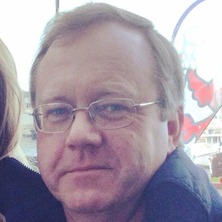
Overview
Background
Tony is an expert mining structural geologist who applies his skills to problems of deep earth mass mining, giant open pits, near-mine exploration, and the local and regional lithostructural controls on complex metalliferous mineral deposits. As a Senior Research Fellow in mining and engineering geology at the University of Queensland, Tony’s pioneering research focussed on the geological modelling and data inputs required for planning deep cave mining operations, an area that had received little previous consideration from geologists. He led the Geology and Mass Mining Project (GMM), which examined the geoscientific inputs required for exploring, defining, establishing, and mining block and sub-level caving operations that were being developed on giant porphyry copper-gold systems and IOCG deposits. While much research was being done in Australia to explore the deep earth environment, very little was being done to model the geology of large and deep mineralized systems, and then to use the new data and models to plan and extract any large discoveries made. Tony’s pioneering work was some of the first and most comprehensive to be done in this field.
- Fellow and chartered professional (geology) of the Australasian Institute of Mining and Metallurgy
- Fellow of the Society of Economic Geologists
- Fellow of the Geological Society
- Fellow of the Australian Institute of Geoscientists
- Member, Geological Society of Australia
- Member, Australasian Society for Historical Archaeology
Tony is presently a Principal Structural Geologist with a Brisbane-based geophysical and geological consulting group.
Availability
- Dr Tony Webster is:
- Available for supervision
- Media expert
Fields of research
Qualifications
- Bachelor (Honours) of Science (Advanced), La Trobe University
- Masters (Coursework) of Science, James Cook University
- Bachelor of Arts, University of New England Australia
- Doctor of Philosophy, University of Tasmania
- Bachelor of Adult and Vocational Education, University of Tasmania
- Postgraduate Diploma, University of New South Wales
Research interests
-
The deformation and metamorphism of base metal deposits
Particularly at high metamorphic grade. The variable behaviour of sulphide species at differing metamorphic grades (especially the comparison of granulite grade and greenschist grade metamorphism).
-
Geoscientific input to deep earth mining.
With a particular interest in the uses of geoscientific information in the planning and operation of very large block and sublevel caves.
-
Applications of 3D imagery to geoscientific data collection and analysis
Applications of photogrammetry and laser scanning technologies to the collection of geological and geotechnical data - with specific applications to open pit and underground mining.
-
Urban geology and the development of settlements into cities
-
Structural geology for geotechnical management of open pit mines.
Research impacts
First comprehensive description of the geology and structural evolution of the supergiant Broken Hill Ag-Pb-Zn orebodies since 1939.
Works
Search Professor Tony Webster’s works on UQ eSpace
1998
Book Chapter
Broken Hill lead-zinc-silver deposit
Morland, R. and Webster, A. E. (1998). Broken Hill lead-zinc-silver deposit. Geology of Australian and Papua New Guinean Mineral Deposits. (pp. 619-626) edited by D. H. Mackenzie and D. A. Berkman. Carlton South, VIC, Australia: Australasian Institute of Mining and Metallurgy.
1998
Book Chapter
Elura zinc-lead-silver deposit, Cobar
Webster, A. E. and Lutherborrow, C. H. (1998). Elura zinc-lead-silver deposit, Cobar. Geology of Australian and Papua New Guinean Mineral Deposits. (pp. 587-592) edited by D. H. Mackenzie and D. A. Berkman. Carlton South, VIC, Australia: Australasian Institute of Mining and Metallurgy.
1996
Journal Article
Delamerian refolding of the Palaeoproterozoic Broken Hill Block
Webster, A. E. (1996). Delamerian refolding of the Palaeoproterozoic Broken Hill Block. Australian Journal of Earth Sciences, 43 (1), 85-89. doi: 10.1080/08120099608728237
1994
Conference Publication
A structural interpretation of the Broken Hill orebody as suggested by the internal features and macroscopic geometry of the mineralization
Webster, Antony E. (1994). A structural interpretation of the Broken Hill orebody as suggested by the internal features and macroscopic geometry of the mineralization. 12th Australian Geological Convention, Perth, WA, Australia, 26-30 September, 1994. Sydney, NSW, Australia: Geological Society of Australia.
Supervision
Availability
- Dr Tony Webster is:
- Available for supervision
Looking for a supervisor? Read our advice on how to choose a supervisor.
Supervision history
Completed supervision
-
2018
Doctor Philosophy
Natural caving systems as potential analogues to mining induced caving
Principal Advisor
Other advisors: Emeritus Professor Joan Esterle
Media
Enquiries
Contact Dr Tony Webster directly for media enquiries about:
- Deep mining
- Urban geology
Need help?
For help with finding experts, story ideas and media enquiries, contact our Media team:
